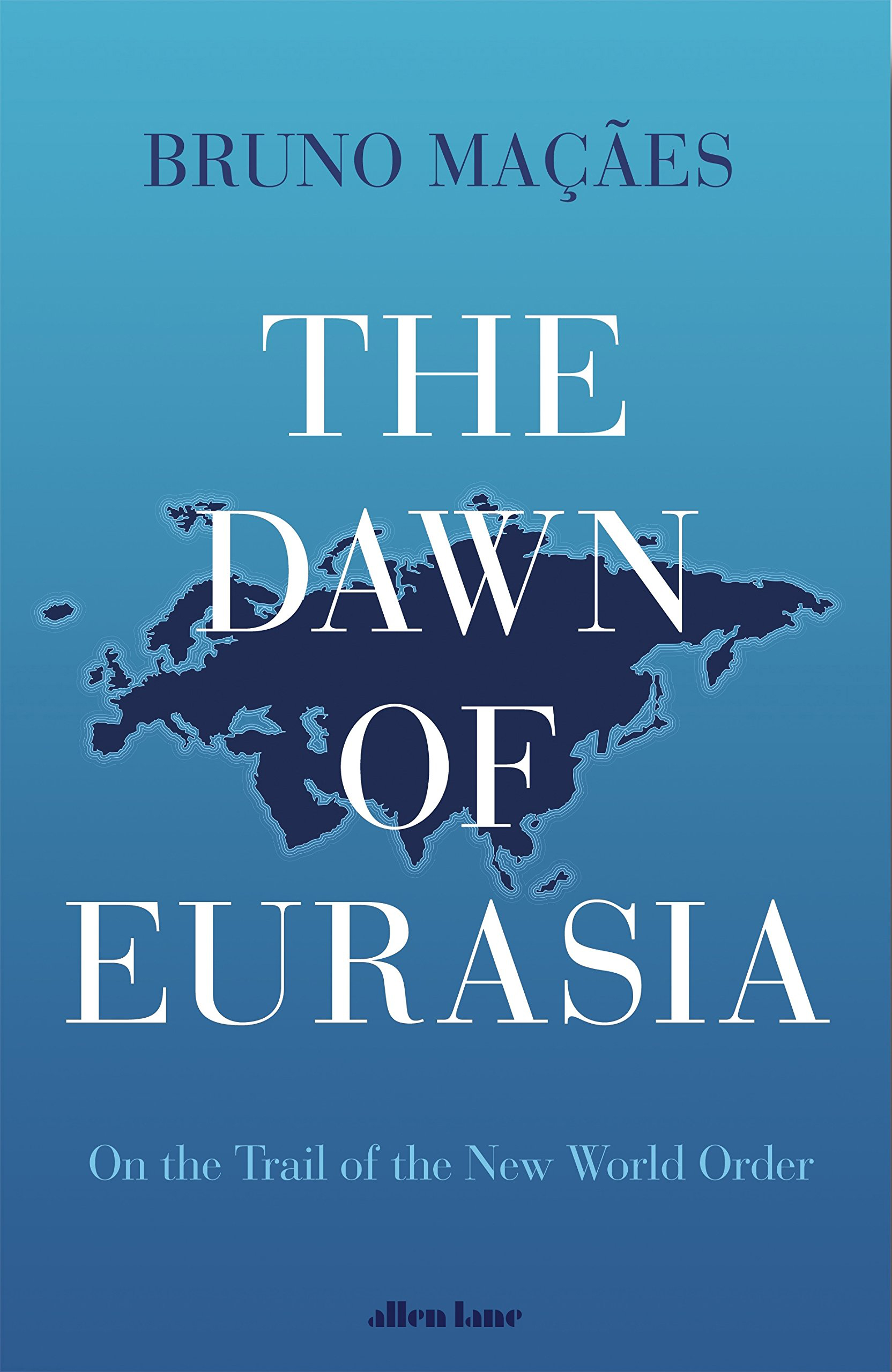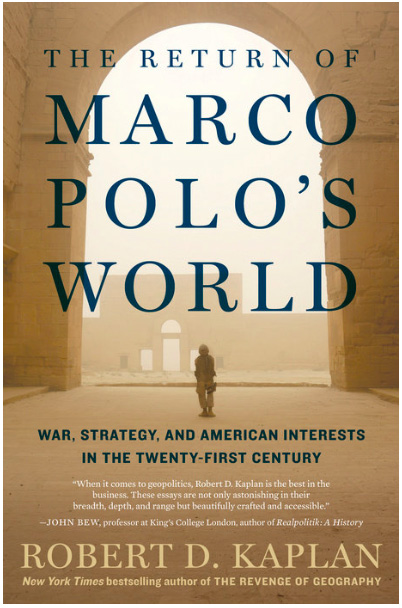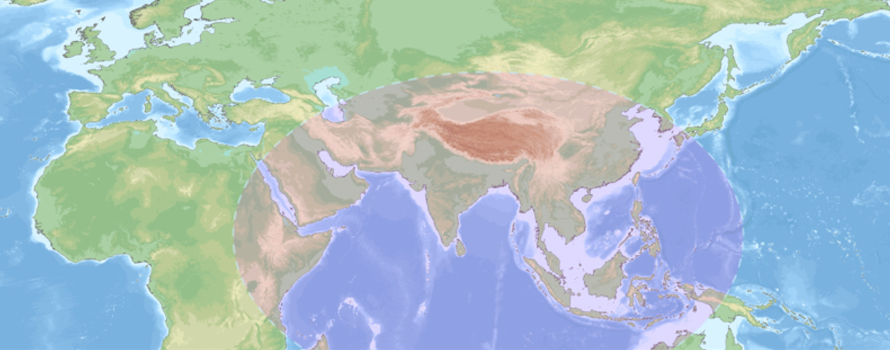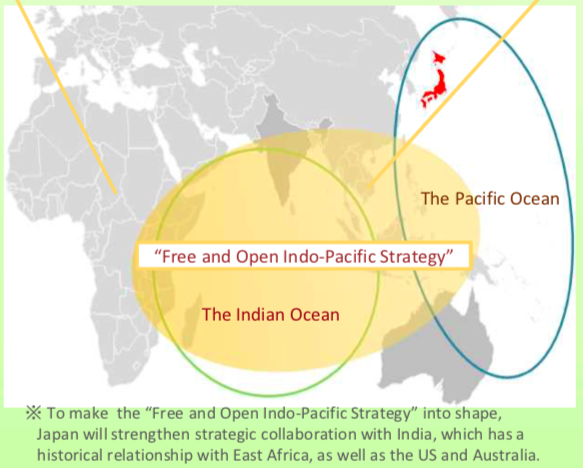Ruta de navegación
Menú de navegación
Blogs
Entries with label eurasia .
[Bruno Maçães, The Dawn of Eurasia. On the Trail of the New World Order. Allen Lane. Milton Keynes, 2018. 281 pp]
review / Emili J. Blasco
 |
The discussion on the emergence of Eurasia as an increasingly compact reality, no longer as a mere geographical description that was conceptually a chimera, owes much to the contribution of Bruno Maçães; particularly to his book The Dawn of Eurasia, but also to his continuous proselytizing to different audiences. This Portuguese diplomat with research activity in Europe notes the consolidation of the Eurasian mass as a single continent (or supercontinent) to all intents and purposes.
"One of the reasons we have to start thinking about Eurasia is because this is how China is increasingly looking at the world (...) China is already living a Eurasian age," says Maçães. What is new about it, he says, "is not that there are such connections between continents, but that, for the first time, they work both ways. Only when the influence flows in both directions can we speak of an integrated space." The Silk Belt and Road Initiative, especially its overland route, sample that China is no longer looking only to the Pacific, but is also contemplating new routes to Europe.
Maçães urges Europe to adopt a Eurasian perspective, for three reasons: because Russia and China have one; because most of the big foreign policy issues of our time have to do with how Europe and Asia are connected (Ukraine, refugee crisis, energy and trade); and because all the security threats of the coming decades will play out in a Eurasian context. Maçães adds a final reason why Europe should become more actively involved in the Eurasian integration project : it is the way to combat the forces of disintegration that exist within Europe itself.
From the various considerations included in the book, some suggestive ideas could be highlighted. One is that Russia's historic problems of identity, straddling Europe and Asia - seeing itself as different from the Europeans and at the same time being attracted by the modernity of the West - are now being replicated in the East, where China is on its way to creating a second pole of economic growth and integration in the supercontinent. If Europe is one of the poles and Asia (China and the other successful countries of the Far East) the other, then what is Russia, if it does not fully respond to the European and Asian identities?
The Silk Belt and Road Initiative gives geopolitical importance to Central Asia, as Maçães reviews. Thus, China needs a clear dominance of Xinjiang, its westernmost province and the gateway to the Central Asian republics. The land route to Europe cannot exist without the Xinjinag segment, but at the same time the exhibition of this Uyghur-majority territory to trade and modernization could accentuate its separatist aspirations. Just northwest of Xinjiang is the ex-Soviet republic of Kazakhstan, a vast country of great agricultural value, where Chinese attempts to buy land are being viewed with high suspicion from its capital, Astana. Maçães estimates that if Russia were to try to reintegrate Kazakhstan into its sphere of influence, as vehemently as it has done with Ukraine, "China would not stand aside."
Not only are the East Coast (European peninsula) and the West Coast (Pacific coast) moving closer together, but the connections between the two also improve logistical conditions in the interior of the supercontinent. This is precisely one of the objectives of the Silk Belt and Road Initiative: as Chinese companies have moved away from coastal business hubs to lower labor costs, they are moving farther away from ports and therefore need better land connections, thus contributing to the shrinking of Eurasia.
[Robert Kaplan, The Return of framework Polo's World. War, Strategy, and American Interests in the Twenty-first Century. Random House. New York, 2017. 280 pp.]
review / Emili J. Blasco
 |
The signs of "imperial fatigue" that the United States is giving—a less willingness to provide world order—contrast with the destiny of projection on the globe that its nature and size imprint on it. "The United States is doomed to lead. It's the sentence of geography," writes Robert Kaplan. "No. The United States is not a normal country (...), but it has the obligations of an empire."
Between the reality of a great power whose foreign policy has entered a new phase – a certain withdrawal on the international scene, begun by Barack Obama and continued by Donald Trump – and the demands of its national interest, which in Kaplan's opinion requires an assertive presence in the world, moves the new book by this well-known American geopolitical author.
Unlike his previous works – the most recent is Earning the Rockies. How Geography Shapes America's Role in the World (2017) – this time it is a volume that collects his essays and articles published in different media over the last few years. The longest, which gives degree scroll to the compilation, was commissioned by the Pentagon; The headline of another of the texts, also from 2016, heads these lines.
Eurasia
When Kaplan talks about returning to the world of framework Polo is meaning two things. The main one is the new link that is emerging between China and Europe thanks to the increased trade, symbolized by the new Silk Road, which gives rise to a long essay about the materialization of what until now was only an idea: Eurasia. The other meaning, which he develops further elsewhere in the book, has to do with the new international order we are moving towards, which he calls "competitive anarchy": an era of greater anarchy compared to the time of the Cold War and the one we have known since then (the Cold Age). average of framework Polo was also a time of multiple powers.)
Kaplan is one of the authors who is most concerned about the emergence of Eurasia. The arrival of Syrian migrants in Europe has made it dependent on the vicissitudes in the Middle East, showing that the internal borders of the supercontinent are fading. "As Europe disappears, Eurasia becomes cohesive. The supercontinent has become a fluid and comprehensive unit of trade and conflict," he writes. And with the cohesion of Eurasia, the specific weight of the world shifts from the Asia-Pacific to the Indo-Pacific or, as Kaplan also calls it, the Great Indian Ocean.
Realism, Morals and Values
Among the many strategic aspects that Kaplan considers in relation to Eurasia, perhaps one important caveat can go unnoticed: much of China's success in its Belt and Road course depends on Pakistan acting as the leader of the Belt. core topic which, in the middle of the arch, gives it completion and at the same time sustains it. "Pakistan will be the main recorder of China's ability to link its [land] Silk Road through Eurasia with its [maritime] Silk Road through the Indian Ocean," Kaplan said. In his view, Pakistan's instability, even if it does not end up causing the country's collapse, could well limit the effectiveness of the great project Chinese.
Outside of that Eurasian chapter, the book is an argument, sober and calm, with Kaplan's always elegant prose, of the principles of realism, understood as "a sensibility rooted in a mature sense of the tragic, of all the things that can go wrong in foreign policy, so that caution and caution knowledge of history are embedded in the realistic way of thinking." For a realist, "order comes before freedom and interests before values," because "without order there is no freedom for anyone, and without interests a state has no incentive to project values."
Kaplan discusses these considerations in articles dedicated to the thought of Henry Kissinger, Samuel Huntington, and John Mearsheimer, all of them realists of different stripes, of which he is close, especially the first: Kissinger's reputation will only increase over the years, he says. On the other hand, he rejects that Trump's foreign policy can be framed in the realist doctrine, because the American president lacks a sense of history, and that is because he does not read.
Kaplan presents realism as a sensibility, rather than a guide with recipes for acting in crisis situations, and certainly on various pages he enters into the discussion on whether the external actions of a State should be guided by morality and the defence of values. "The United States, like any nation – but especially because it is a great power – simply has interests that are not always consistent with its values. This is tragic, but it is a tragedy that has to be embraced and accepted." "Because the United States is a liberal power, its interests – even when they are not directly concerned with human rights – are generally moral. But they are only secondarily moral."

▲area Indo-Pacific and adjacent territories [Wikimedia-Commons]
ANALYSIS / Emili J. Blasco
We are witnessing the effective birth of Eurasia. If that word arose as an artifice, to bring together two adjacent, unrelated geographies, today Eurasia is emerging as a reality, in a single geography. The catalyst has been above all China's westward opening: as China has begun to take care of its rear end – Central Asia – and has drawn new land routes to Europe, the distances between the margins of Eurasia have also been narrowing. The maps of the Belt and Road Initiative have the effect of first presenting a single continent, from Shanghai to Paris or Madrid. The trade war between Beijing and Washington and the European helplessness of the former American umbrella contribute to China and Europe seeking each other.
A consequence of the gaze crossed from the two extremes of the supercontinent, whose meeting It builds this new mental map of continuous territory, is that the world axis moves to the Indian Ocean. It is no longer in the Atlantic, as when the United States took up the banner of the West from Europe, nor in the Pacific, where it had moved with the emerging phenomenon of East Asia. What seemed to be the location of the future, the Asia-Pacific, is giving way to the Indo-Pacific, where China certainly does not lose prominence, but remains more subject to the Eurasian balance of power. The irony for China is that in order to regain its former position as the Middle Kingdom, its expansive plans will end up giving centrality to India, its veiled nemesis.
Eurasia shrinks
The idea of a shrinking of Eurasia, which reduces its vast geography to the size of our visual field, gaining in its own entity, was expressed two years ago by Robert Kaplan in a essay which he then collected in his book The Return of framework Polo's World (2018)[1]. It is precisely the revival of the Silk Road, with its historical reminiscences, that has ended up putting Europe and the East on the same plane in our minds, as in a few centuries in which, unknown America, there was nothing beyond the surrounding oceans. "As Europe disappears," Kaplan says in reference letter to Europe's increasingly vaporous borders, "Eurasia is cohesive." "The supercontinent is becoming a fluid, global unit of trade and conflict," he says.
For Bruno Maçães, author of The Down of Eurasia (2018)[2], we have entered a Eurasian era. Despite what might have been predicted just a couple of decades ago, "this century will not be Asian," says Maçães. Nor will it be European or American, but we are as we were at that time, at the end of the First World War, when we went from talking about Europe to talking about the West. Now Europe, detached from the United States, as this Portuguese author argues, is also being integrated into something bigger: Eurasia.
Given this movement, both Kaplan and Maçães predict a dissolution of the West. The American emphasises Europe's shortcomings: "Europe, at least as we have known it, has begun to disappear. And with it the West itself"; while the European rather points out the disinterest of the United States: "One gets the sense that the American universalist vocation is not to guarantee the global pre-eminence of Western civilization, but to remain the sole global superpower."
Change the axis of the world
In the wake of the finding The sixteenth century saw the culmination of a gradual transfer of hegemony and civilization in the world to the West. "The empires of the Persians and the Chaldeans had been replaced by those of Egypt, Greece, Italy, and France, and now by that of Spain. Here would remain the center of the world," writes John Elliott, quoting a writing of the time, by the humanist Pérez de Oliva[3]. The idea of an end station was also had when the specific weight of the world was placed in the Atlantic, and then in the Pacific. Today we continue again this turn to the west, to the Indian Ocean, perhaps without much desire to consider it definitive, even if the return of the beginnings theorized by the Renaissance is completed.
After all, there have also been shifts of the centre of gravity in the opposite direction, if we look at other parameters. In the decades after 1945, the average of economic activity between different geographies was located in the center of the Atlantic. At the turn of the century, however, the centre of gravity of economic transactions has been located east of the borders of the European Union, according to Maçães, who predicts that in ten years the midpoint will be on the border between Europe and Asia, and in the middle of the 21st century between India and China. countries that are "committed to developing the largest trade relationship in the world". With this, India "can become the central knot between the extremes of the new supercontinent." Moving to one side of the planet we have reached the same point – the Indian Ocean – as on the journey in the opposite direction.
The island world
Unlike the Atlantic and the Pacific, oceans that extend vertically from pole to pole, the Indian Ocean unfolds horizontally and instead of meeting two shores, it has three. This means that Africa, at least its eastern area, is also part of this new centrality: if the speed of navigation brought about by the monsoons has historically facilitated a narrow strait of life. contact From the Indian subcontinent to the east coast of Africa, new maritime silk roads can further increase trade. This, and the growing arrival of sub-Saharan migrants in Europe, reflects a centripetal phenomenon that even gives rise to talk of Afro-Eurasia. So, as Kaplan points out, referring to the island world as Halford Mackinder once did "is no longer premature." Maçães recalls that Mackinder saw the fact that it was not possible to circumnavigate it completely as a difficulty in perceiving the reality of this island world . Today that perception should be easier, when the Arctic route is being opened.
In the framework From Halford Mackinder's and Nicholas Spykman's complementary theories of the Heartland and the Rimland, respectively, any centrality of India has to be reflected in maritime power. With its access to the interior of Asia closed by the Himalayas and by an antagonistic Pakistan (it has the only and complex passage of Kashmir left), it is in the sea that India can project its influence. Like India, China and Europe are also in the Eurasian Rimland , from where all these powers will dispute the balance of power among themselves and also with the Heartland, which basically occupies Russia, although not exclusively: in the Heartland there are also the Central Asian republics, which take on a special value in the Eurasian region. skill for the space and resources of a shrunken supercontinent.
Pivot to Eurasia
In this region of the Indo-Pacific, or the Greater Indian Ocean, which stretches from the Persian Gulf and the coasts of East Africa to the second island chain of Asia-Pacific, the United States has an external role. To the extent that the island world becomes more cohesive, the American satellite character is more emphasized. The grand strategy of the United States then becomes what has been the traditional imperative of the United Kingdom with respect to Europe: to prevent one power from dominating the continent, something that is more easily achieved by supporting one or another continental power in order to weaken the one that is stronger at any given time (France or Germany, Germany, France according to the historical period; today Russia or China). Already in the Cold War, the United States strove to prevent the USSR from becoming a hegemon by also controlling Western Europe. Eurasia enters a presumably intense balance of power game, as was the European scenario between the 19th and 20th centuries.
That's why Kaplan says Russia can be contained much more by China than by the United States, just as Washington should take advantage of Russia to limit China's power, at Henry Kissinger's suggestion. To this end, the Pentagon should expand its strategic presence in the Western Pacific to the west: if as an external and maritime power it cannot access the continental center of Eurasia, it can take a position in the very bowels of that great region, which is the Indian Ocean itself.
"If Obama pivoted to Asia, then Trump has pivoted to Eurasia. Decision-makers in the United States seem increasingly aware that the new center of gravity in world politics is not the Pacific or the Atlantic, but the Old World between the two," Maçães wrote in a blog post. essay after his book[4].
|
Image of the presentation Official of the Japanese Free and Open Indo-Pacific Strategy [Ministry of Foreign Affairs of Japan] |
Partnerships with India
The U.S. shift in focus from Asia-Pacific to the Indo-Pacific was formally expressed in the National Security Strategy published in December 2017, the first of its kind. subject of documents prepared by the Trump Administration. Consequently, the United States has renamed its Pacific Command Indo-Pacific Command.
Washington's strategy, like that of other leading Western countries in the region, especially Japan and Australia, involves a coalition of some subject with India, because of the centrality of this country and as the best way to contain China and Russia.
The desirability of a stronger relationship with New Delhi was already outlined by Trump during the visit Indian Prime Minister Narendra Modi to Washington in June 2017, and then by then-Secretary of State Rex Tillerson in October 2017. His successor, Mike Pompeo, addressed a framework It was more defined in July 2018, when it announced $113 million in grants for projects aimed at achieving greater connectivity in the region, from digital technologies to infrastructure. The advertisement it was understood as the U.S. desire to confront the Belt and Road Initiative launched by China.
The U.S. Indo-Pacific Strategy is sometimes presented in conjunction with the Strategy for a Free and Open Indo-Pacific (FOIP), which is the name given by Japan for its own cooperation initiative for the region, already laid out ten years ago by Japanese Prime Minister Shinzo Abe. Both coincide in having India, Japan, Australia and the United States as the main guarantors of regional security, but they have two main divergences. One is that for Washington the Indo-Pacific goes from the eastern seaboard of India to the west coast of the United States, while in the Japanese initiative the map goes from the Persian Gulf and the African coast to the Philippines and New Zealand. The other has to do with the way China is perceived: proposal seeks Chinese cooperation, at least at the declarative level, while the purpose The U.S. government is to address the "risks of Chinese dominance," as stated in the National Security Strategy.
India has also developed an initiative of its own, introduced in 2014 as the Act East Policy (AEP), to enhance cooperation between India and Asia-Pacific countries, especially ASEAN. For its part, Australia presented its Policy Roadmap for the region in 2017, which builds on the security already provided by the United States and advocates continued understanding with the "Indo-Pacific democracies" (Japan, South Korea, India and Indonesia).
Other consequences
Some other consequences of the birth of Eurasia, of different order and importance, are:
–The European Union is not only ceasing to be attractive as a project Not only does the reality of Eurasia reduce it to being a peninsula on the margins of the supercontinent. For example, the old question of whether or not Turkey is part of Europe loses any interest: Turkey is going to have a better position on the chessboard.
–The corridors that China wants to open to the Indian Ocean (Myanmar and, above all, Pakistan) are becoming very important. Without being able to regain the thousand-year-old status of Middle Kingdom, China will value even more having the province of Xinjiang as a way to be less tilted on one side of the supercontinent and as a platform for a greater projection into the interior of it.
The U.S. pivot to Eurasia will force Washington to distribute its forces over a larger expanse of sea and its shores, with the risk of losing deterrent or intervention power in certain places. Taking care of the Indian Ocean can unintentionally lead you to neglect the South China Sea. One way to gain influence in the Indian Ocean without much effort could be to move the headquarters of the Fifth Fleet from Bahrain to Oman, also a stone's throw from the Strait of Hormuz, but outside the Persian Gulf.
Russia has traditionally been seen as a bridge between Europe and Asia, and has had some currents advocating a Eurasianism that presented Eurasia as a third continent (Russia), with Europe and Asia on either side, and that reserved the name of Greater Eurasia for the supercontinent. To the extent that this shrinks, Russia will benefit from the greater connectivity between one end and the other and will be more on top of its former Central Asian republics, although they will have to be more connected to the other. contact with a higher issue of neighbors.
(1) Kaplan, R. (2018) The Return fo framework Polo's World. War, Strategy, and American Interests in the Twenty-First Century. New York: Random House
(2) Maçães, B. (2018) The Dawn of Eurasia. On the Trail of the New World Order. Milton Keynes: Allen Lane
(3) Elliott, J. (2015) The Old World and the New (1492-165). Madrid: Alianza publishing house
(4) Maçães, B. (2018). Trump's Pivot to Eurasia. The American Interest. August 21, 2018

